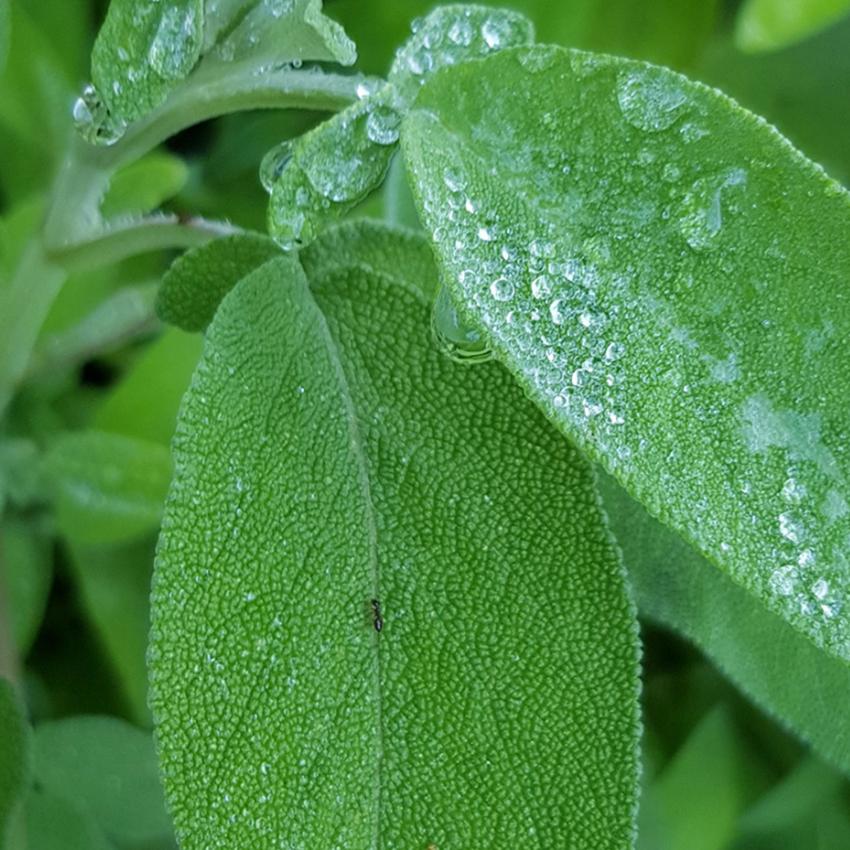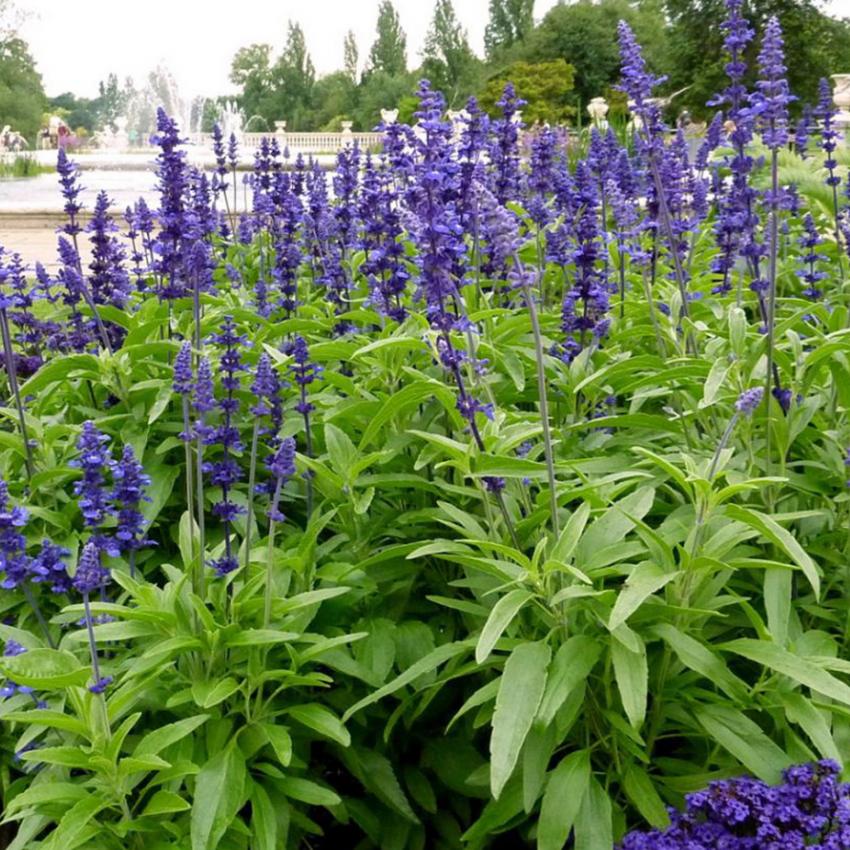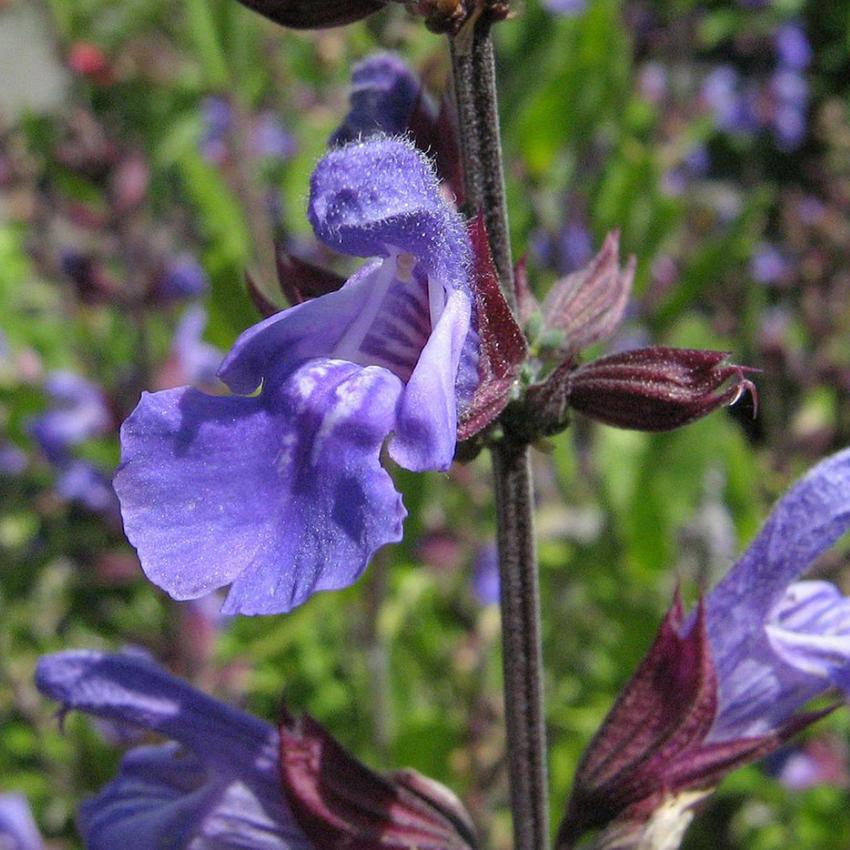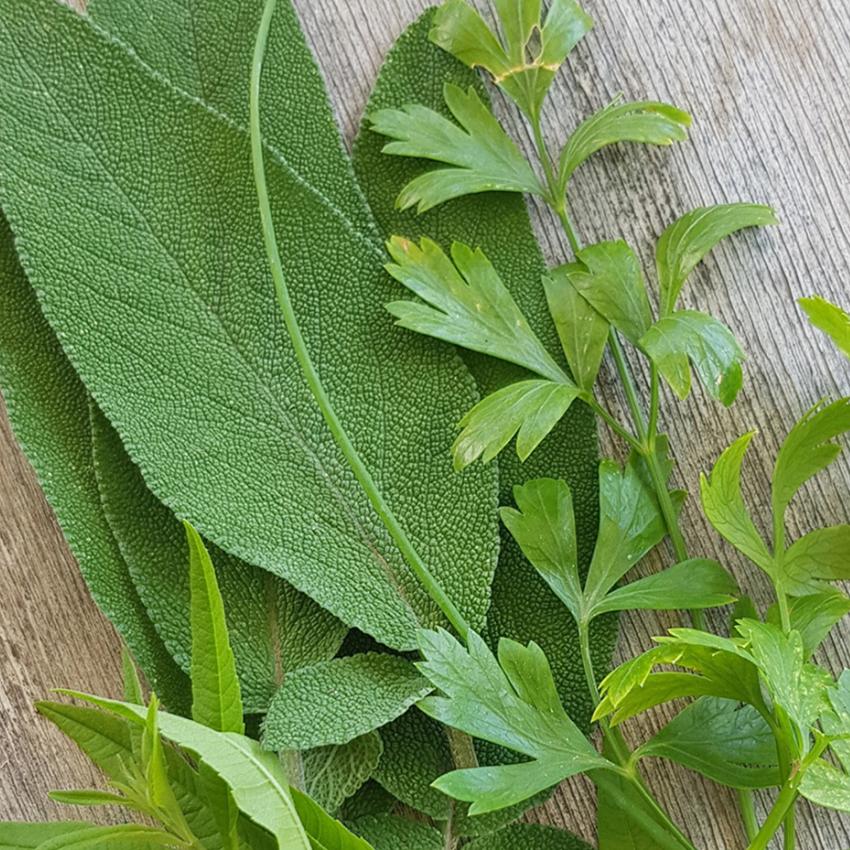



Sage
Salvia officinalis
Sage (also called garden sage, common sage, or culinary sage) is a member of the mint family Lamiaceae and native to the Mediterranean region, though it has been naturalized in many places throughout the world. It has a long history of medicinal and culinary use.
Sage has been used since ancient times for warding off evil, snakebites, increasing women's fertility, and more. The Romans referred to sage as the "holy herb," and employed it in their religious rituals. The plant had a high reputation throughout the Middle Ages, with many sayings referring to its healing properties. It was sometimes called S. salvatrix (sage the savior). It appears in recipes for Four Thieves Vinegar, a blend of herbs which was supposed to ward off the plague. In past centuries, it was also used for hair care, insect bites, wasp stings as well as nervous conditions, mental conditions, oral preparations for inflammation of the mouth, tongue and throat, and also to reduce fevers.
In Britain, sage has for generations been listed as one of the essential herbs. It has a savory, slightly peppery flavor. It appears in many European cuisines, notably Italian, Balkan and Middle Eastern cookery. In Italian cuisine, it is an essential condiment for saltimbocca and other dishes, favoured with fish. In British and American cooking, it is traditionally served as sage and onion stuffing, an accompaniment to roast turkey or chicken at Christmas or Thanksgiving, and for Sunday roast dinners. Other dishes include pork casserole, Sage Derby cheese and Lincolnshire sausages. In the Levant and Egypt it is commonly used as a flavor for hot black tea, or boiled and served as an herbal drink in its own right.
Some research has suggested certain extracts of salvia officinalis may have positive effects on human brain function, but no firm conclusions can be drawn.

Find the plant...
